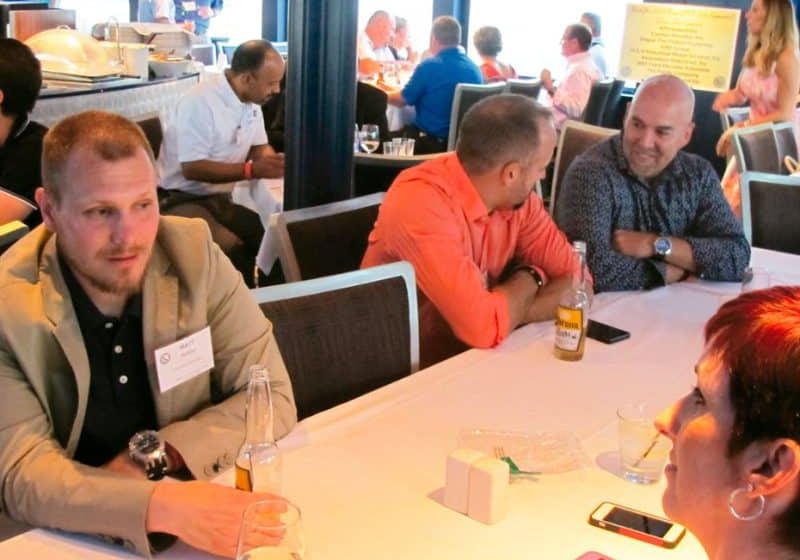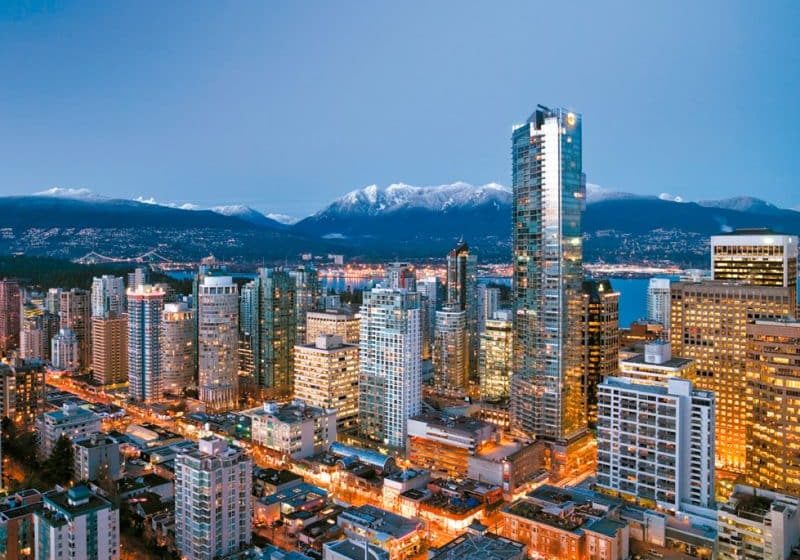Having recently performed a survey of escalators exposed to the weather, a continually discussed question was on the functionality of weatherproofing provisions. The shopping center where the survey was performed had escalators installed during the 1980s without weather provisions and escalators installed or modernized from 2006-2013 with weatherproofing provisions.
Code requirements for covers and safety provisions are only the first steps toward reliable operation.
The shopping center is partially covered with retail, convenience stores and restaurants. It spans approximately four city blocks and runs parallel to a major access road into the center of town. The center is surrounded by hotels and is less than 1 mi. from the ocean. There is a substantial accumulation of sand throughout the mall due to its proximity to the ocean and easy pedestrian access. Additionally, the winds create blowing water, and, during the raining season, there is a substantial amount of standing and draining water.
Equipment
There is a variety of units in the shopping center, ranging both in age and type of weather protection. The units installed include Otis J-type (installed in the 1980s), KONE E-3000 units (installed in the 1990s), Schindler 9300E units (installed in 2006) and ThyssenKrupp Velino Escalators (installed in 2010). The Otis units were modernized by Otis in 2014 and 2015. The ThyssenKrupp and the recently modernized Otis units had weatherproofing provisions installed. All units are covered under a full maintenance contract.
There are canopy covers over most of the escalators. Some of them are installed inside the center but still have exposure to wind, driving rain and sand from shoppers returning from the beach. Six of the recently modernized Otis units and the two ThyssenKrupp units have the following weatherproofing provisions.
Finishes and exposed fasteners:
- Stainless steel skirt panels
- Stainless steel trim and deck boards
- Stainless steel exposed hardware and fasteners
- Powder coated undersides of steps and comb plates to prevent corrosion
- Handrails:
- Neoprene handrail with DACRON® lining and a black finish
- Stainless steel handrail guides
- Water diverting:
- Drains in bottom of truss from drip pans
- Galvanized drip pans with drains in bottom of truss
- Galvanized trusses (for new escalators only)
- Wiring:
- Operating controls and switches are installed in NEMA 12 enclosures.
- Weatherproof gaskets were provided under emergency-stop button covers.
- Lubrication:
- Some oil-less chains were installed. Other chains were lubricated with moisture-proof material.
- Automatic oiler for all chains and step guides
Survey
The survey was performed over 10 days. Steps were removed from the escalators by qualified elevator mechanics for access to their interiors. Due to excessive heat and exposure to the sun, most of the units were surveyed in the morning hours. The condition of the equipment varied, but some commonalities were observed:
- The automatic lubrication devices are relatively ineffective. The mechanic’s experience was that the automatic devices created more problems than a manually applied lubricant.
- The drains in the pits of the new escalators are somewhat helpful in removing water from the pit. However, the pumps and drains often become overwhelmed with water and cannot keep up with the infiltration of water. As a result, the operating mechanisms in the pit, the handrails, the chains, etc. are all exposed to the water. As the escalator operates, this water is dispersed throughout the unit. This results in rust and corrosion on all operating and structural components.
- The handrails, which are specifically developed for exterior applications, are problematic and have a lifespan of only three to four years. The handrails not of the DACRON type actually have a relatively identical lifespan.
- There were some worn rollers noted on both the weather-protected units and those that had not received any treatment.
- The handrail chain on the units with weather-protection provisions were noted as having rust and being loose approximately three years after installation.
- The stainless-steel finishes have held up well under these exposed conditions. An interesting comparison was made to units (also exposed) in an adjacent shopping center. Those units, although not thoroughly surveyed, are less than five years old, and the stainless steel is showing signs of wear and corrosion.
Handrail failure is the most consistent and common problem noted on all of the units, regardless of the type of rail installed.
Conclusions
As these modernized and recently installed units are relatively young for an effective evaluation of their longevity, it is difficult to make any definitive conclusions regarding the long-term effectiveness of the weatherproofing.
Handrail failure is the most consistent and common problem noted on all of the units, regardless of the type of rail installed. The interior lining of these handrails appears to swell during heavy rains and high heats. When this happens, the handrail rollers rub against and deteriorate the inside lining. As these findings are anecdotal, based on discussions with the mechanic and visual observations, further evaluation of the effectiveness of the outside handrails is recommended to determine why the exterior handrails deteriorate under these conditions. Units located closer to the interior of the shopping mall displayed less handrail failure than those with direct exposure to rain and heat.
Complete protection of escalators from exterior conditions is by far the best solution to providing longevity and reliable operation. As difficult as this is during the design of new centers, the architectural team should be informed as to the long- and short-term impact exposure to outside elements has on escalators. Code requirements for covers and safety provisions are only the first steps toward reliable operation. The best conditions for escalators are in enclosed environments.
Those responsible for the operation and maintenance of the facility with exposed escalators should be made aware of the accelerated wear on their components. This includes incorporating an aggressive maintenance plan with the goal of optimizing the life of exterior escalators. Escalator maintenance programs in facilities that operate 24/7 require careful coordination. In order to afford access to the interior of the units to complete maintenance tasks, it is necessary to develop schedules that will not interfere with shopping-center operations. This may need to take place during overtime hours so that adequate time is provided to perform all maintenance tasks and cleanup. This must be accomplished prior to periods of heavy use, such as Thanksgiving and Christmas.
Too often, maintenance cannot be accomplished, as there are no provisions for overtime work, and budget constraints do not allow for the extra costs incurred. If the property manager and owners are made aware of these added costs during the maintenance contract negotiation, the facility can accurately budget and provide schedules for this work. An aggressive maintenance program with specified planned shutdowns, carefully scheduled with the shopping centers, are critical to the safe and consistent functioning of their escalators. These requirements must be clearly stated and incorporated into the maintenance contract. The contract should have specific provisions for the service hours, the required cleanup frequencies, requirements for assisting the facility in water removal and performance parameters to ensure contractual compliance.
The use of escalators in outside environments will probably continue to be designed, and these concerns will continue. In summary, escalators exposed to exterior elements should have weatherproofing provisions and as much enclosure as possible. Finally, as with any escalators, regardless whether they are exposed or interior units, a carefully structured, well-understood and performance-based maintenance program is fundamental to extending the longevity and reliability of the units.
Get more of Elevator World. Sign up for our free e-newsletter.









